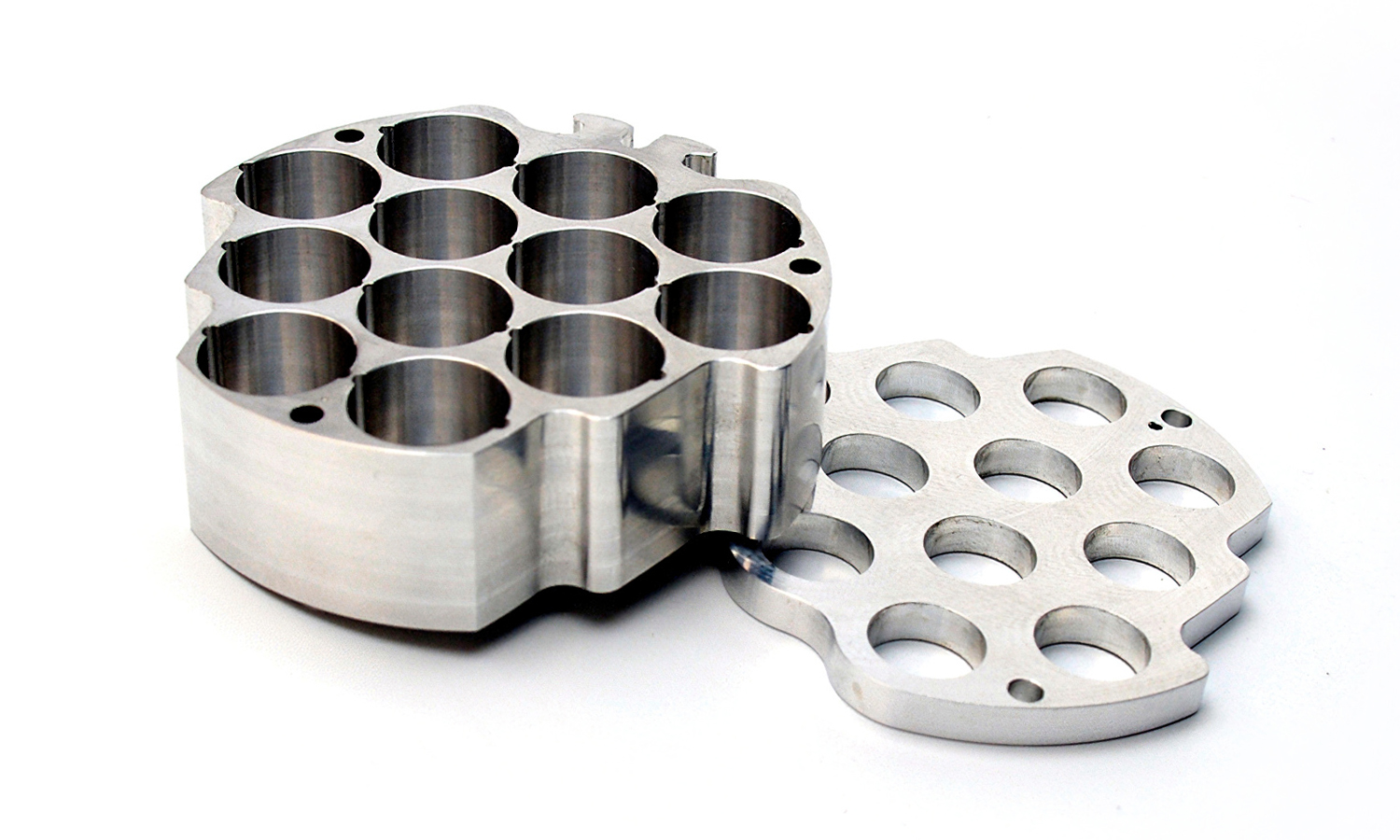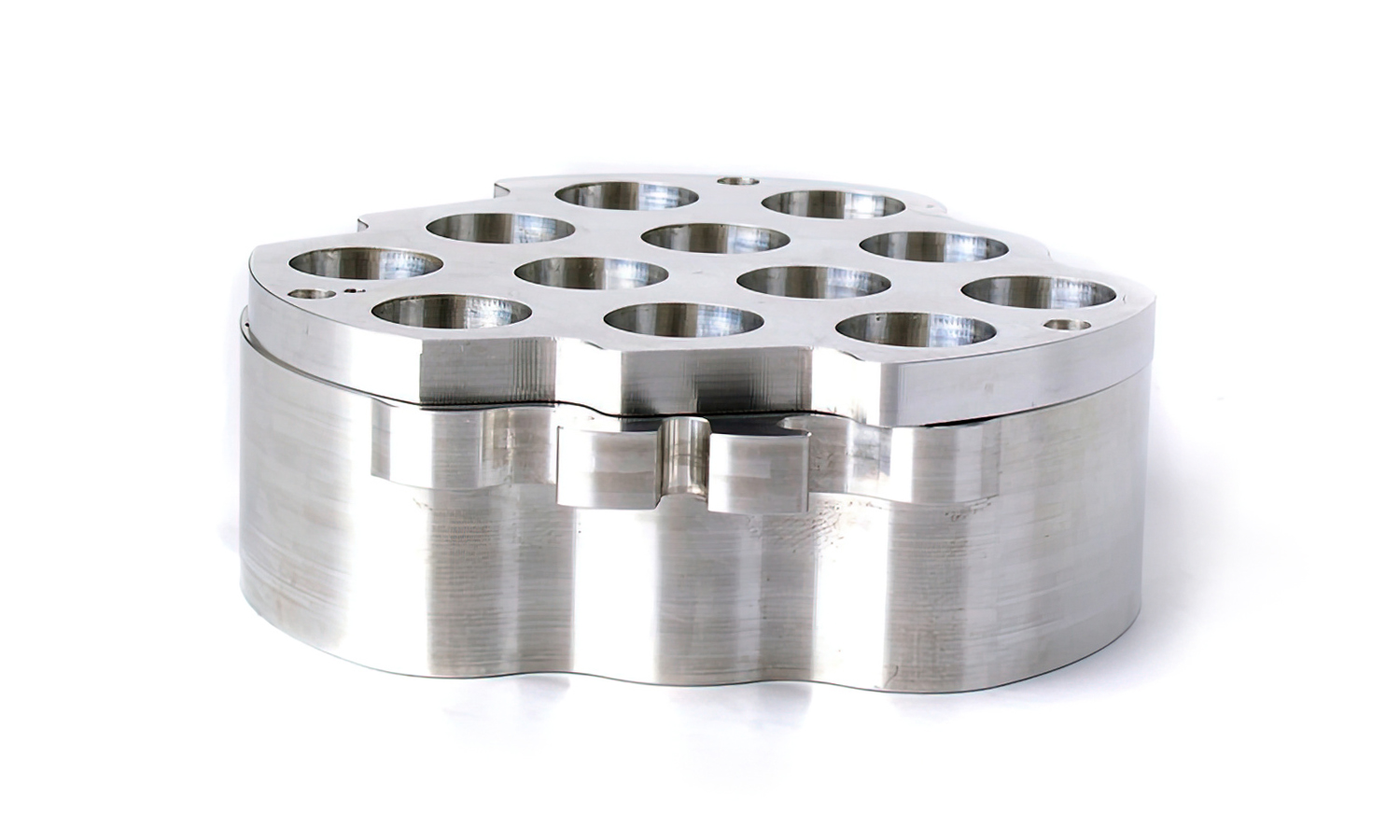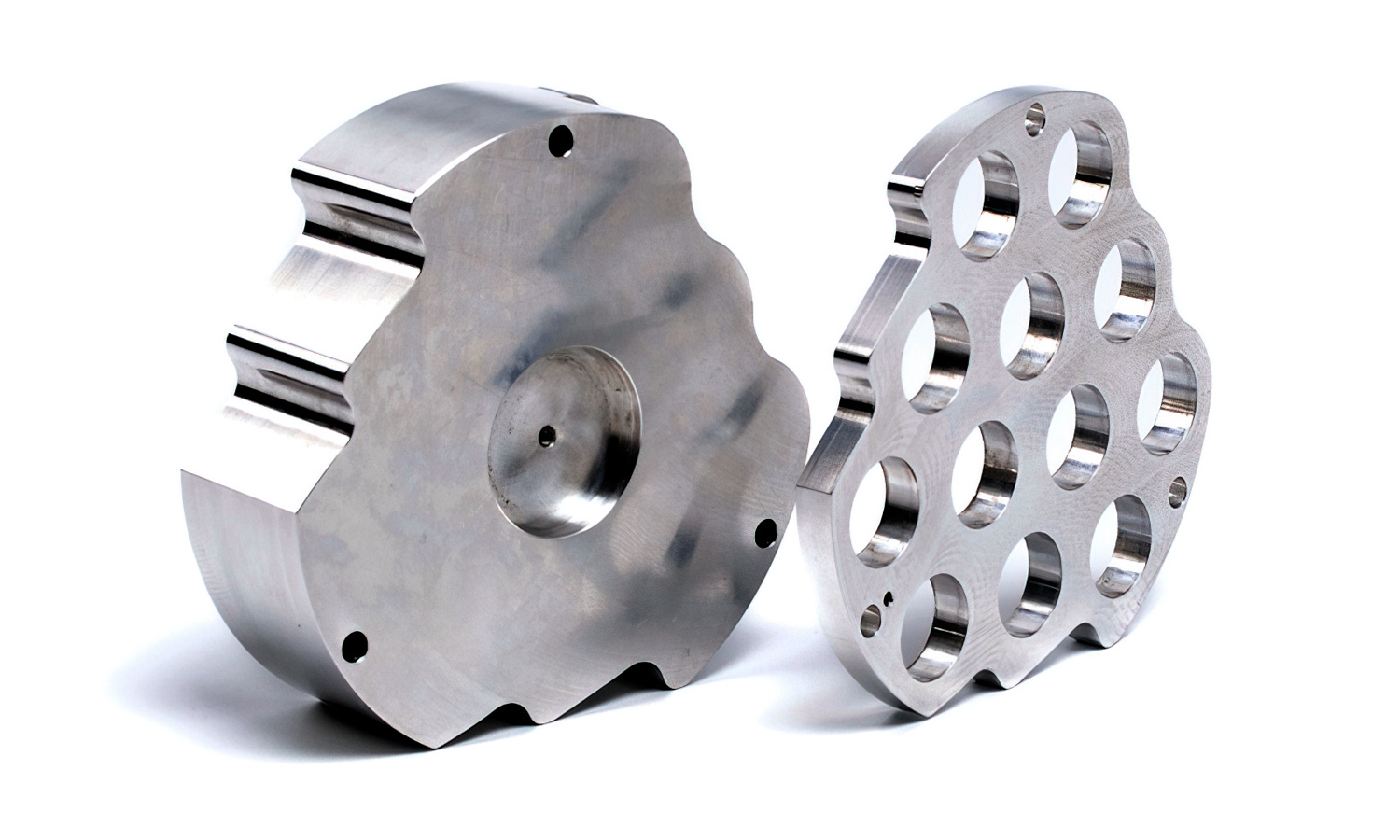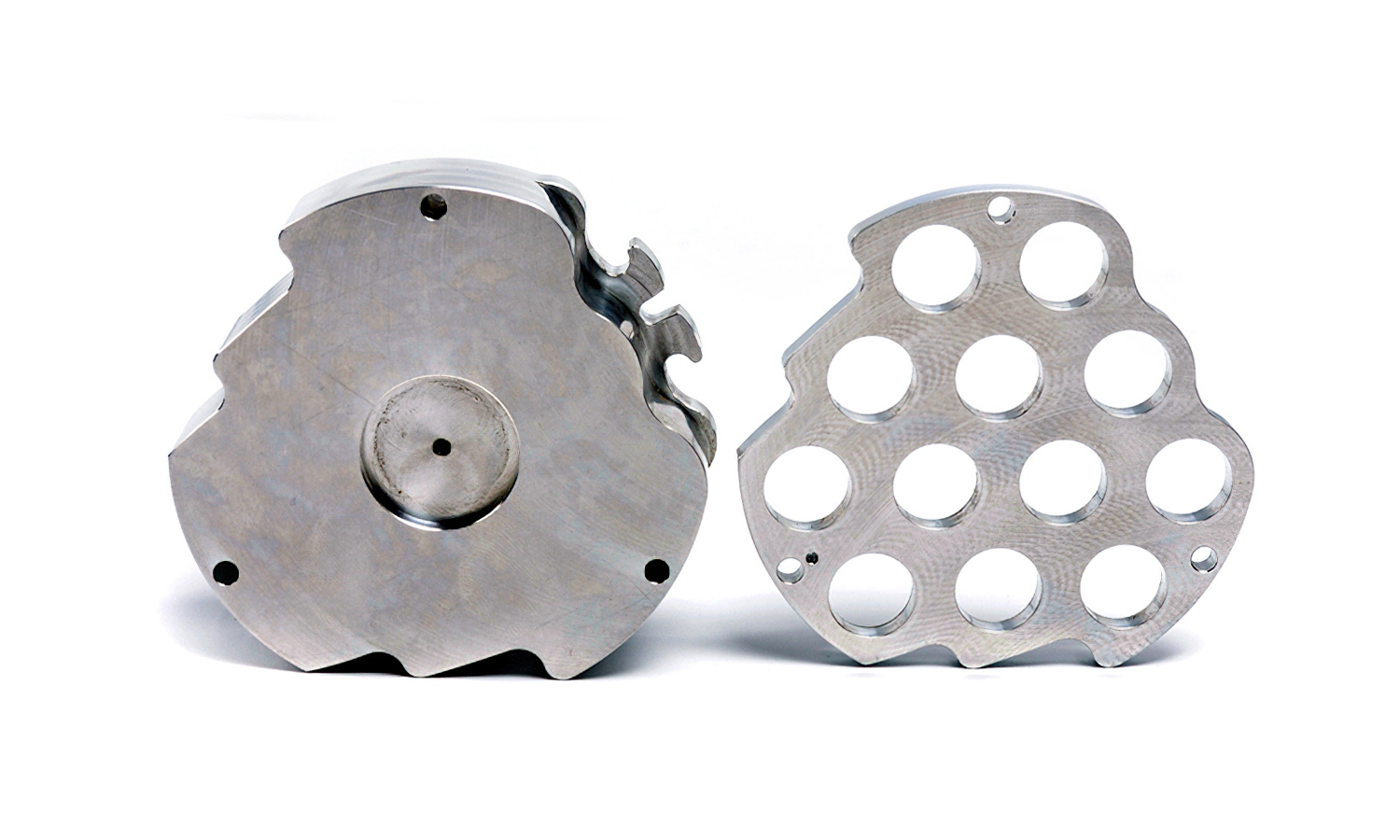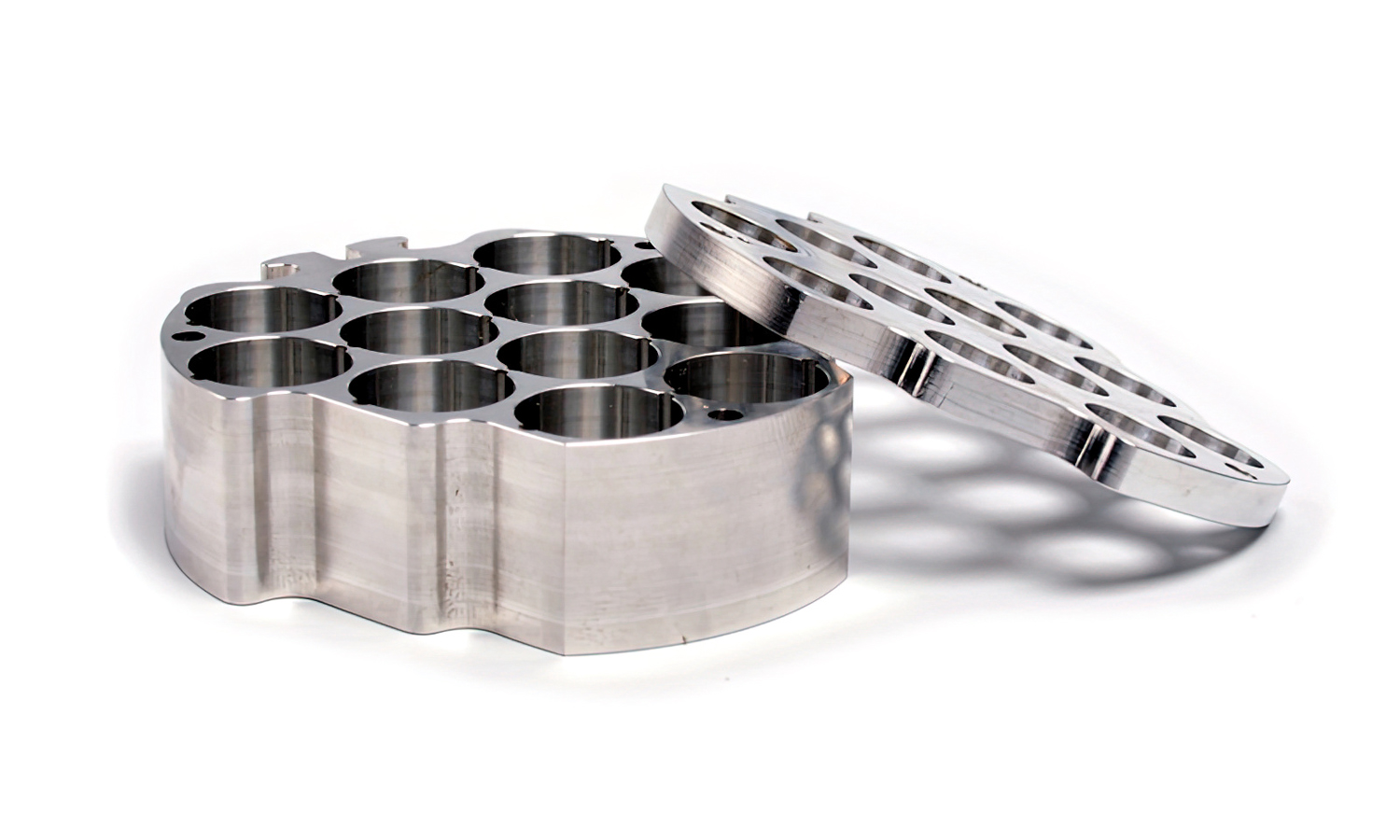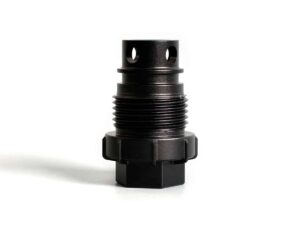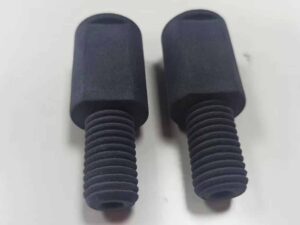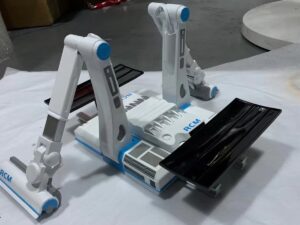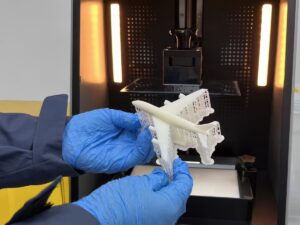- CNC Milled Brass Cutting Nozzle for Plasma Cutter
- Stainless Steel Jesus Pendant with CNC, Wax Casting and Electroplating
Gallery
About Project
Cycloidal pin-wheel reducers are a type of precision gearboxes that use eccentric motion and rolling elements to achieve high reduction ratios, high torque density, high rigidity, and zero backlash. They are widely used in applications that require accurate motion control, such as robotics, medical equipment, satellite antennas, and machine tools.
One of the components of a cycloidal pin-wheel reducer is the cycloidal disk, which has lobes or teeth that engage with pins or needle bearings on the housing. The cycloidal disk rotates around an eccentric shaft and transfers the motion to the output shaft through a cam follower mechanism.
The shape and size of the cycloidal disk can vary depending on the design and specifications of the reducer. One possible shape is a circular plate with many holes distributed evenly on the surface. These holes can serve as mounting points for the pins or needle bearings, as well as reducing the weight and inertia of the disk.
Another component of a cycloidal pin-wheel reducer is the housing, which contains the pins or needle bearings and supports the cycloidal disk. The housing can also have different shapes and features depending on the application and installation requirements. One possible shape is a box with many round slots on the sides. These slots can allow the cycloidal disk to move freely inside the housing, as well as providing lubrication and cooling channels.
The housing can also have a circular groove on the back, which can be used to mount the reducer on a motor or another device. The housing can also have three small holes on both sides, which can be used to fix the housing and the cycloidal disk together with screws or bolts.
One of the advantages of using CNC milling to manufacture these components is that it can produce complex shapes and features with high precision and accuracy. CNC milling is a process that uses computer-controlled machines and cutting tools to remove material from a workpiece and create a desired shape.
CNC milling can also work with different materials, such as aluminum, steel, brass, plastic, etc. Aluminum is a common material for cycloidal pin-wheel reducer parts because it has good strength-to-weight ratio, corrosion resistance, thermal conductivity, and machinability.
If you are looking for a reliable and professional CNC milling service provider, you can check out FacFox’s services. FacFox is an online platform that offers various manufacturing services, such as 3D printing, CNC machining, injection molding, sheet metal fabrication, etc.
FacFox can help you turn your design into reality with high quality and low cost. You can upload your 3D model or 2D drawing on their website and get an instant quote. You can also choose from different materials, finishes, tolerances, and delivery options. Visit facfox.com now and get started!
Solution
- Step 1: A 2D or 3D CAD model of the cycloidal disk and the housing was prepared using CAD/CAM software. The CAD model contained the critical features, dimensions, tolerances, threads, and finishing preferences of the parts.
- Step 2: The CAD model was exported to a CNC-compatible file format, such as G-code or STEP, using the CAD/CAM software. The CNC-compatible file contained the instructions for the CNC milling machine to follow.
- Step 3: The CNC milling machine was set up with the appropriate tools, fixtures, and workholding devices. The workpiece material, which was aluminum, was loaded onto the machine’s table and secured with clamps or vices.
- Step 4: The CNC milling machine was programmed with the CNC-compatible file and started to execute the milling operations. The rotating cutting tools moved along multiple axes and removed material from the workpiece to create the desired shape and features of the cycloidal disk and the housing.
- Step 5: The CNC milling machine checked the quality and accuracy of the milled parts using probes or sensors. Any errors or defects were corrected or removed by adjusting the machine parameters or performing secondary operations.
- Step 6: The CNC milling machine unloaded the finished parts from the table and cleaned them with compressed air or coolant. The parts were then inspected and measured to ensure they met the specifications and requirements.
- Step 7: The cycloidal disk and the housing were assembled together with screws or bolts through the three small holes on both sides. The circular groove on the back of the housing was used to mount the reducer on a motor or another device.

